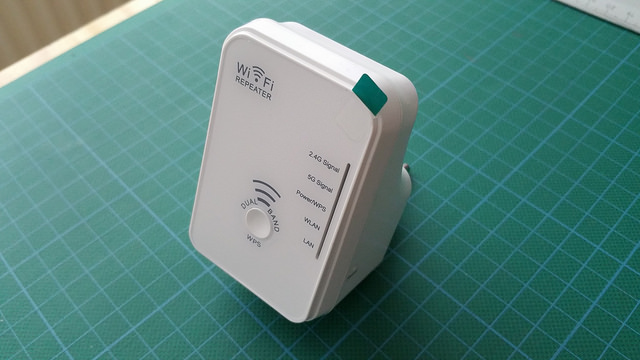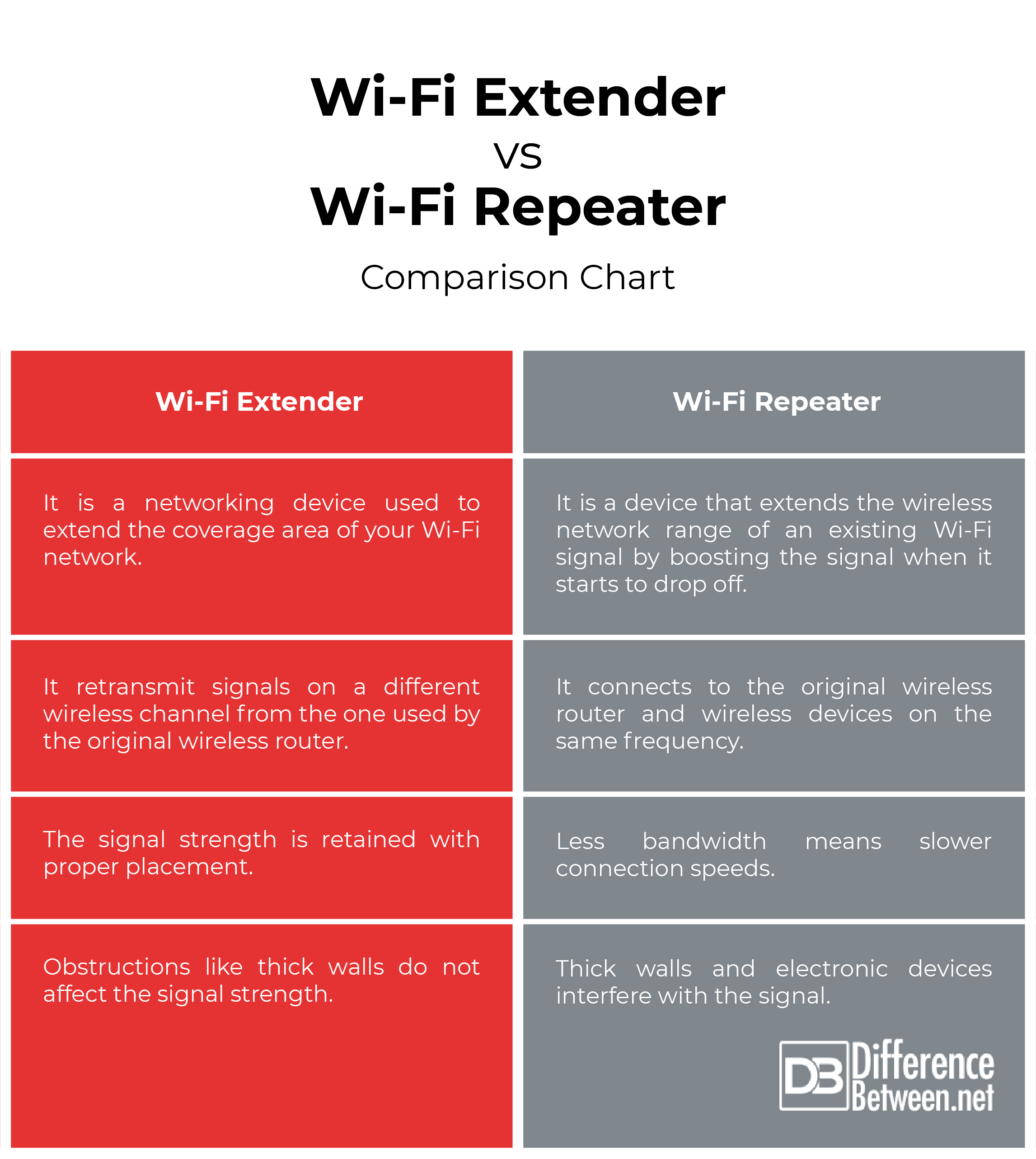Difference Between Wi-Fi Extender and Repeater
If all that seems like life on another planet to you, it’s because the home and its functions in our lives have evolved dramatically since the inception of Internet. Gone are the days when the only way computers were able to being linked to another computer was using a cable the diameter of your thumb and within the floor. Those limitations are actually familiar to today’s commuters, who often have to carry their laptops from their offices to their homes and back again day after day. Life would be so much easier if they could just move the information and leave the wires behind. The means of interconnection has evolved over time and the stage was set for Wi-Fi home networks.
Today millions of people around the world have Wi-Fi networks at their homes. However, Wi-Fi requires some work because it works across hardware platforms and network operating systems. The Wi-Fi standards have been continuously evolving since it was first released in 1997. Soon Wi-Fi at homes becomes the norm. However, getting a reliable Wi-Fi signal at home is one of the biggest hurdles in wireless networking, especially at homes. For such problems, devices like Wi-Fi extender and repeater are commonly used to improve Wi-Fi coverage. While both the devices are basically the same thing, there isn’t a direct comparison to better understand the difference between the two. Let’s take a look at how these devices work and how they differ from each other.
What is Wi-Fi Extender?
Wi-Fi Range Extender, or simply called as a Wi-Fi Extender, is a networking device used to extend the coverage area of your Wi-Fi network. It increases the distance over which a WLAN signal can spread by boosting the Wi-Fi signal thereby overcoming obstacles and improving overall network signal quality. Wi-Fi range extenders are available in different forms as range expanders or signal boosters. Range extenders work as a communication or network repeater that select and reflect Wi-Fi signals from a network’s base router or access point. If the range extenders were directly connected to the primary base station, the network performance of the device would be low. They connect wirelessly to a Wi-Fi router or access point which allows them to work with a limited set of other equipment.
What is Wi-Fi Repeater?
Wi-Fi repeater is yet another networking device that works to extend wireless network range of an existing Wi-Fi signal by boosting the signal when it starts to drop off. Range extenders and Repeaters are mostly the same thing and they are often confused with one another but they are technically different. A repeater takes the original Wi-Fi signal and bounces it further down the line. The device does not physically connect to any computer or to your main router; it only needs AC power and within the range of the main wireless router. It contains two wireless routers – one of the wireless routers picks up the existing Wi-Fi signal and bounces it back to the other router which then transmits the boosted signal thereby the increasing the coverage area.
Difference between Wi-Fi Extender and Repeater
-
Basics of Wi-Fi Extender and Repeater
– Wi-Fi extender and Wi-Fi repeater are mostly the same thing and they are often confused with each other. Both are network devices used to boost existing Wi-Fi signal and are placed somewhere between your wireless router and the farthest wireless adapter in your home. A Wi-Fi range extender is essentially a repeater device that takes the original Wi-Fi signal from the wireless router and bounces it further to boost the signal. The extender does not physically connect to the computer or the original router; it is just a plug-and-play device that needs AC power and stays within the range of the original wireless router.
-
Working
– Wi-Fi extender is a standalone network device that sits between your original router and the location inside your house where the Wi-Fi signal does not reach properly and which requires a better wireless coverage. It takes the existing signal from your router and retransmits it, eventually improving overall network signal quality. Wi-Fi repeater, as the name implies, re-broadcasts the existing Wi-Fi signal received to a finite localized area, allowing devices within range to connect to a similar wireless network. It connects to the wireless router and other wireless devices on the same frequency so bandwidth gets distributed across devices.
-
Performance of Wi-Fi Extender and Repeater
– Wi-Fi range extenders are essentially Wi-Fi repeaters that select and reflect existing Wi-Fi signals from a network’s base router or access point, increasing the distance over which a WLAN signal can spread. Unlike Wi-Fi repeaters, they retransmit signals on a different wireless channel from the one used by the original wireless router which retains the signal strength until proper placement is ensured. Wi-Fi repeaters, on the other hand, distribute the Wi-Fi signals across the different wireless devices, resulting in increased Wi-Fi network response time. This ultimately results in improved signal strength. So in terms of performance and signal strength, Wi-Fi extender is the clear winner.
Wi-Fi Extender vs. Wi-Fi Repeater: Comparison Chart
Summary of Wi-Fi Extender and Repeater
Both Wi-Fi Extender and Wi-Fi Repeater are essentially the same thing with basically the same purpose – to improve the overall network signal quality by boosting the existing Wi-Fi signal. A Wi-Fi range extender is basically a repeater device that takes the original Wi-Fi signal from the main router and bounces it further down the line. It’s available in different forms as wireless range extenders, signal boosters, or network extenders. It mainly works as a network repeater that grabs Wi-Fi signals from a network’s base router or access point and re-broadcasts it across wireless devices.
- Difference Between Caucus and Primary - June 18, 2024
- Difference Between PPO and POS - May 30, 2024
- Difference Between RFID and NFC - May 28, 2024
Search DifferenceBetween.net :
Leave a Response
References :
[0]Miller, Michael. Wireless Networking Absolute Beginner's Guide. Indianapolis: Que Publishing, 2013. Print
[1]Smith, Raymond. Wi-Fi Home Networking. New York: McGraw Hill, 2003. Print



